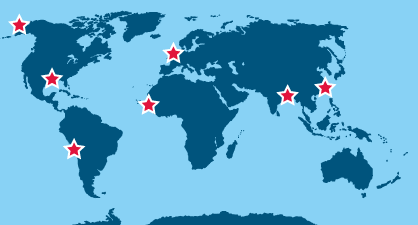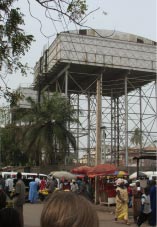
What's going on?
Greater Banjul, The Gambia

The Gambia, in West Africa, is particularly vulnerable to climate change. Its capital city, Banjul, is threatened by rising sea levels and coastal erosion. In nearby tourist areas, many beaches have been washed away - and these have had to be replaced at great cost. Rising sea levels may also affect the area's fishing industry and fresh water supply.
The country is also likely to be affected by drier weather and growing deserts, affecting crops and wildlife. Responding to climate change is a major priority in the country.
Gambia Energy use (per person, per year)
Energy use No figure. Over 80% of the country's energy comes from renewable fuelwood supplies [2]
CO2 "The Gambia is a net sink of carbon dioxide" [3]
Energy use sources [mostly 2000 figures]
[1] State of the World Atlas, 2004, Dan Smith, Earthscan
[2] State of the Environment Report, The Gambia, 1997, National Environment Agency. Online version
[3] Initial National Communications of the Republic of the Gambia to the UN Framework Convention on Climate Change, 2000 [based on 1993 figures]
For more on climate change in The Gambia, see Changing Places >

Main Menu
©2006 WMnet